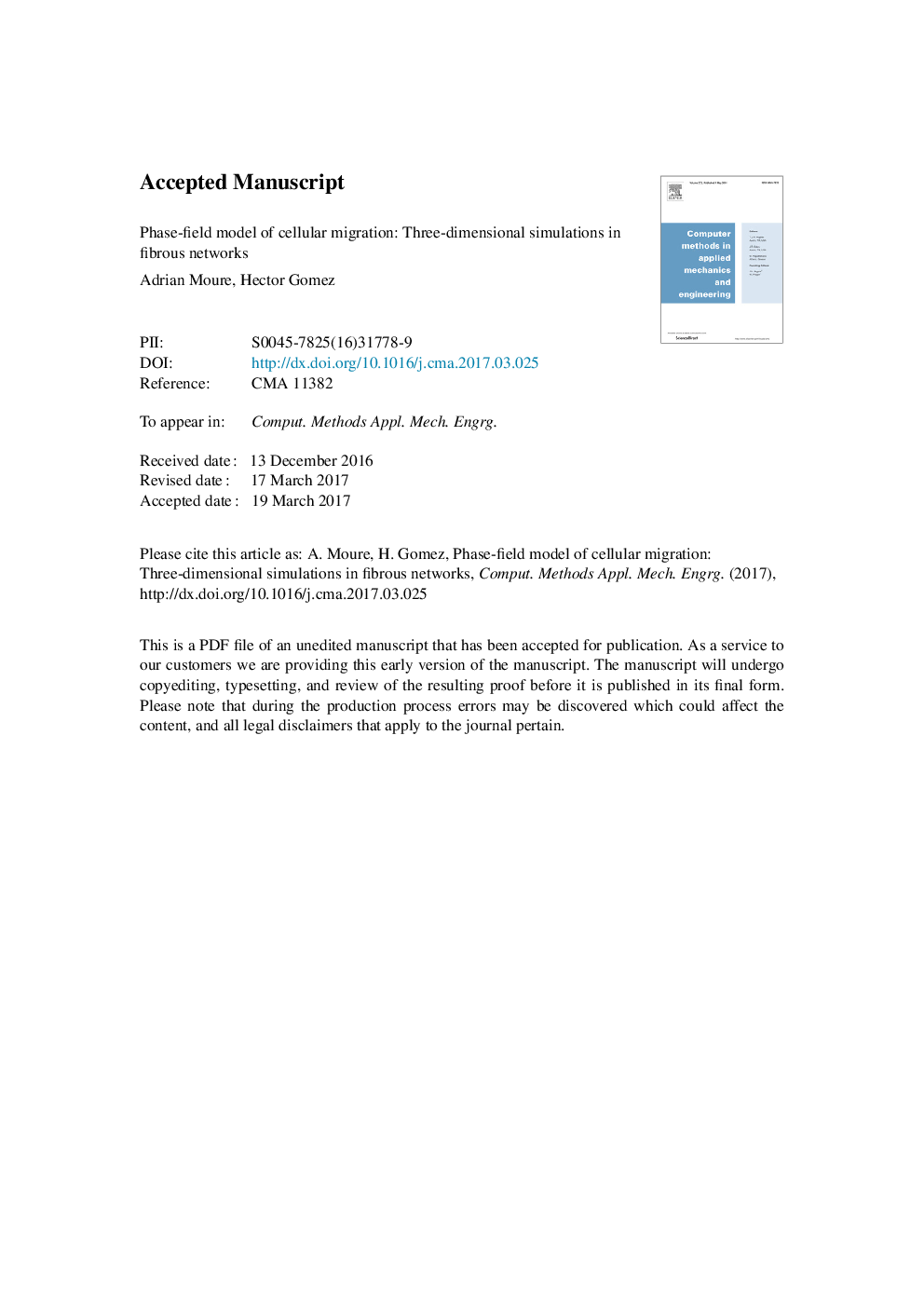| Article ID | Journal | Published Year | Pages | File Type |
|---|---|---|---|---|
| 4963878 | Computer Methods in Applied Mechanics and Engineering | 2017 | 42 Pages |
Abstract
Cell motion plays a key role in many biological processes. Computational models are gaining momentum as a tool that allows a quantitative understanding of the main biological mechanisms of cell motility and produce testable hypotheses. Here, we present a phase-field model of the spontaneous motion of a single cell. The model, which uses a single fixed mesh only, accounts for a generic membrane-bound activator as well as actin and myosin inside the cell. The biochemical interactions between the cellular agents are described through dynamic, nonlinear partial-differential equations. These equations are coupled with a momentum balance law that accounts for the forces involved in cell motion. We propose a computational method based on isogeometric analysis. We show numerical examples corresponding to stationary states of keratocytes and dynamic motion of Dictyostelium with and without obstacles. We present a three-dimensional example of cell motion within a fibrous network of obstacles. This simulation is seen as a preliminary step for the computational study of cellular migration in the extracellular matrix.
Related Topics
Physical Sciences and Engineering
Computer Science
Computer Science Applications
Authors
Adrian Moure, Hector Gomez,
